In the center of Newburgh is the oldest church building in the city. In good times and bad, particularly through the turmoil of the 1960s and the demolition of more than a thousand buildings in the city for so-called urban renewal in the early 1970s, St. George’s Episcopal Church on Grand Street has remained steadfast. It stands today as a spiritual home and one of the Hudson Valley’s and New York State’s most historic sacred sites.
Perhaps, just perhaps, the people channeled the determination of the minister who originally led St. George’s in the building of this striking sacred structure nearly 200 years ago. Are people guided by the spirit of a sacred place’s spiritual ancestors? How much can such resilience shape a community around it in good times and in bad? This church makes one weigh such possibilities and impact.
In the disorder and disturbances a half-century ago, some members of St. George’s Episcopal Church in Newburgh believed that the congregation should move from Grand Street, where it had been since the early 19th century, to the suburbs. But the parish did not relocate. The congregation’s vestry, its committee elected to administer such matters, decided that St. George’s should hold fast in its historic place, in the center of this Orange County city.
Some might think it farfetched that a 19th century minister’s spirit would influence the church many, many decades later. However, even in 2016, the Rev. Dr. John Brown’s determination and influence feel relevant, in the history, spiritual presence, and elegant simplicity of this Federal-style building, its artifacts, and the prominence in church literature. The Rev. Brown was all of 26 years old when, two years after he was called to become St. George’s rector, he led church members in erecting this picturesque church, which the Right Rev. John Hobart, New York diocese bishop, consecrated on Nov. 10, 1819.
In its craggy stone walls, visible in the church tower’s interior, lie a testament to the hands that made this place. The original construction encompassed many trips to a local quarry to acquire stone and collect sand (the minister called these trips, “stone bees”). Five days after the consecration, the Rev. Brown married Frances Ludlow and commenced a lifelong devotion to the parish and community. He was the church’s rector and leader for 63 years, until retiring at age 87 in 1878. (The Rev. Brown died in 1884 at the age of 93.)
Like the lives of people, the life of a sacred site demands resilience, strength, and a continually strong commitment on the part of its stewards. Similar to buildings retrofitted with new features, congregations adapt to the needs and requirements of each generation in order to survive and remain active in a community. This reality came through in May when the church was among the approximately 170 churches, temples, synagogues, and meeting houses open to the public for the New York State Sacred Sites Open House weekend. St. George’s is part of Newburgh’s East End Historic District, which is recognized by the state and listed on the National Register of Historic Places.
St. George’s Episcopal Church
The congregation members are justifiably proud of the history, beauty, and current activities of St. George’s, evident in a church tour and conversations with members. But sacred places like this contend with the demands of wear over time and the need constantly for funds to ensure the structure will last and thrive into its third century. The members are straightforward about the cost of repairs and the maintenance the structure needs to survive well into the future, such as shoring up the foundation. The repairs are needed to keep the church’s physical structure in support of its spiritual vitality.
The Rev. Brown, from various accounts, was an incredible community presence over his six-plus decades as rector. He not only led the construction of this fine, substantial church but oversaw the establishment in 1838 of St. George’s Cemetery on Washington Street in Newburgh, church literature explains. He was an avid gardener who planted numerous trees around the church, the parsonage on First Street, and in the cemetery, and was the founder and first president of the Newburgh Horticultural Society. He and the women of St. George’s were instrumental in the founding of St. Luke’s Hospital, in 1874.
A framed portrait of the Rev. John Brown hangs in the church’s John Brown Room, which the church uses for meetings and hospitality events after services.
Today, the congregation seeks to shape its flock with that community spirit. Among the parish’s activities are its Voices of Hope children’s choir and Girl Power, an empowerment group for adolescent girls. The church’s food pantry feeds a large number of local families each month.
Maintaining this historic and spiritual space is also an important component of the community. As the church’s rector, the Rev. Dustin Trowbridge, told the Hudson Valley Press in May, “I often hear from parishioners that experiencing the beauty of St. George’s worship space for the first time made a profound impression on them, so we’re delighted at this opportunity to provide that experience to the whole community.” The Open House weekend in late May actually fell on the birthday of the Rev. Brown, which the Rev. Trowbridge called “a happy coincidence.”
A walk through the church reveals its evolution and its interplay with world and local history. One can view a copy of the charter that King George III granted to St. George’s in 1770 (though the church’s establishment dates to 1729). But it wasn’t until the early decades of the 19th century, under the Rev. Brown, that a small, dedicated congregation built and expanded a physical home. Its interconnection with New York City can be traced from its early years. Trinity Church presented St. George’s with a baptismal font in 1835. At this time, the vestry decided to enlarge the church at its western perimeter – one of various expansions over these two centuries – and to erect a steeple.
Walking through the sanctuary and an adjoining chapel provides an opportunity to appreciate magnificent art, including stained glass windows that congregants placed in the church to memorialize members in the early 20th century. Two are known to be from the Tiffany Studios. In the sanctuary space is a statue, carved in English linden wood, that honors a parish member who was killed in World War II.
The Brewster Memorial Window, the “Adoration of the Cross,” is a Tiffany window. It memorializes Eugene Brewster, a prominent Newburgh lawyer and long-time vestry member who, among other accomplishments, drafted Newburgh’s original City Charter.
From that small church building of the early 19th century, St. George’s church is now a comparatively sprawling structure, after expansions over the years. When St. Paul’s Church combined with St. George’s in 1946, the congregation constructed a beautiful chapel off the sanctuary dedicated to memorials from the church. Its splendid stained glass windows, from the original St. Paul’s, help create a peaceful, solemn setting.
But even as the church members guide others through their historic church and honor St. George’s roots, as they did at the Open House, the congregation’s literature proclaims, “we do not live in the past. This vital, active parish is in constant motion and continues to contribute to the community.” Considering St. George’s role in the community, its mission, and many good works, the congregation recognizes that buildings, like people, need to be nurtured, body and soul.
Following is a closer look at St. George’s Church, through photos taken on the Sacred Sites Open House weekend of 2016.
The Balfe Memorial Window, “The Empty Tomb,” is from the Tiffany Studios. It honors Mary Abbie Wentz Balfe, a St. George’s congregation member who died in 1913.
The church organ and this chandelier were both placed within St. George’s in 1966. The baroque-style organ, which the Gress-Miles Company made, has 19 voices, 27 ranks, and 1,552 pipes.
This view behind the altar shows the church’s simple beauty as well as evidence of the leaks that St. George’s seeks to repair in the near-future. The triptych window, depicting the Ascension of Jesus, is from 1880.
This American stained glass window, memorializing Roberta L. Weed, contains one of the blessings of the Beatitudes, from the Gospel of Matthew: “Blessed are the pure in heart for they shall see God.”
Detail of the window honoring Roberta L. Weed, who died in 1915
A window depicts an angel blowing a horn
This statue of St. George, carved of linden wood, honors a parishioner who was killed in World War II.
Part of the stone wall visible in the interior of the church tower
A cross rendered in leaded glass
The front entrance of St. George’s
This stained glass window memorializes church member William Fullerton, who died in 1900. Fullerton was a prominent attorney who argued in some of the Gilded Era’s highest-profile cases and became known as the “great American cross-examiner.”
This richly colored, intricate stained glass window honors parishioner Katharine S. Van Duzer Burton, who died in 1913.
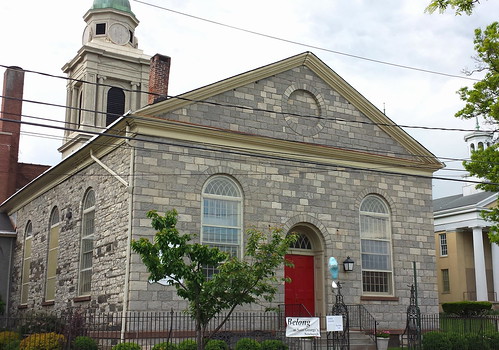
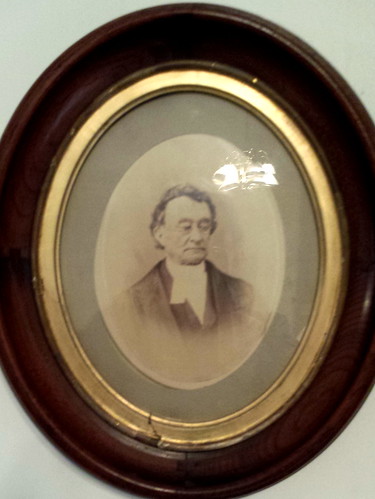
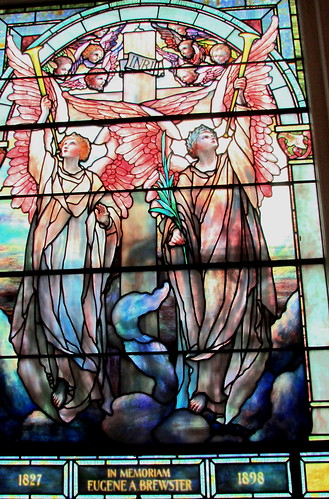
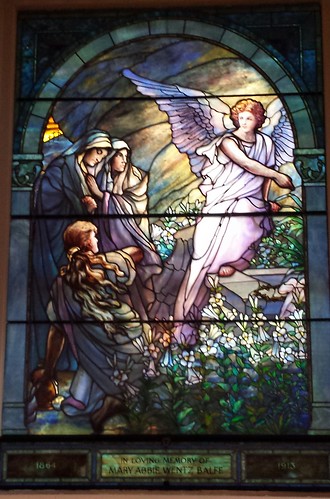
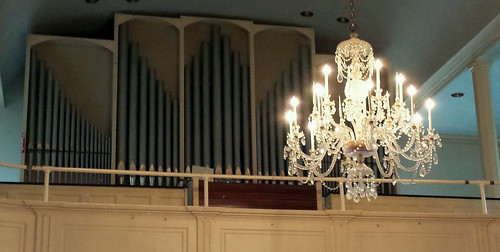
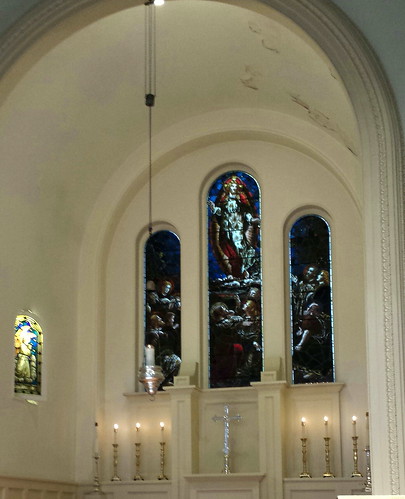
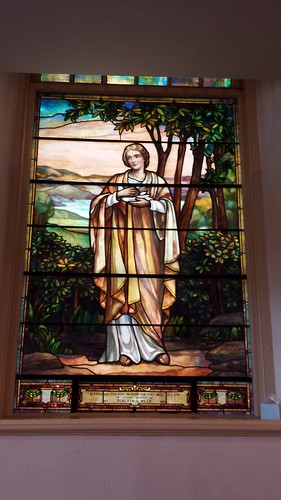
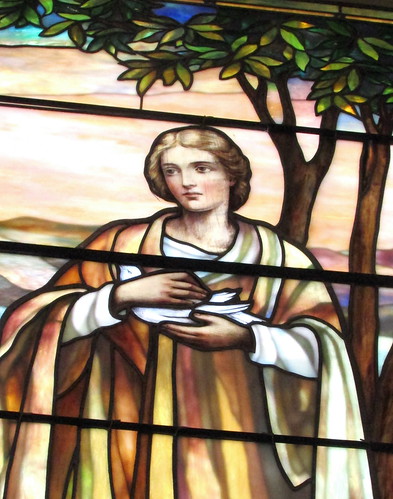
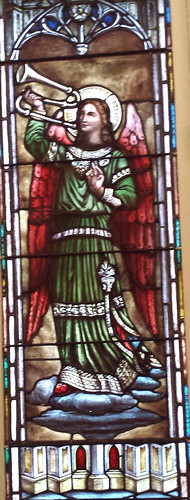
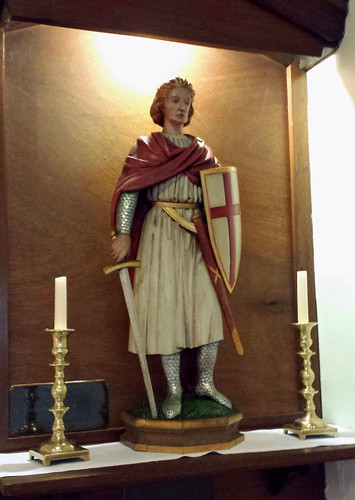

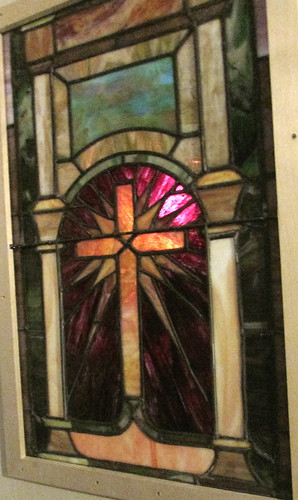
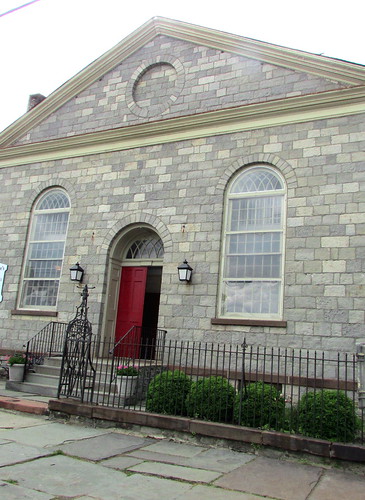
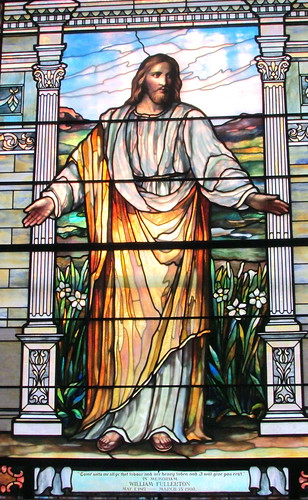
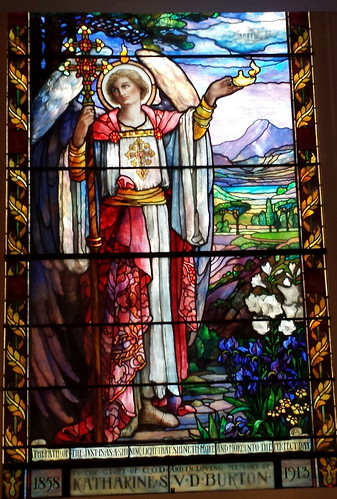



No Comments so far ↓
There are no comments yet...Kick things off by filling out the form below.